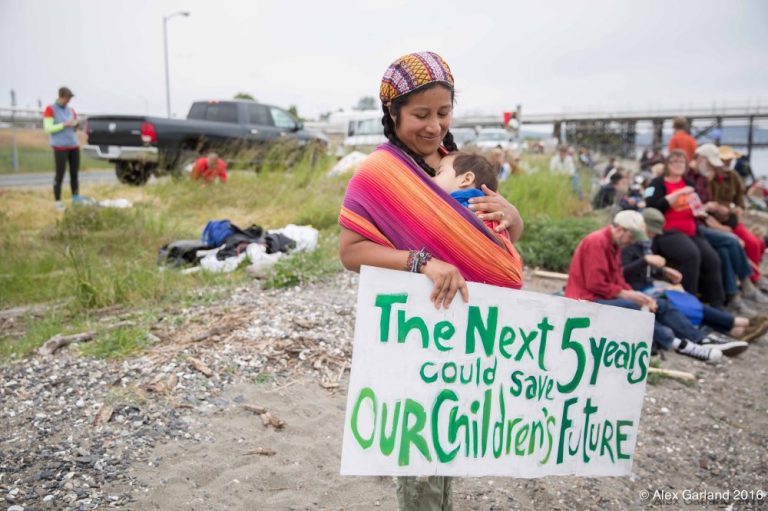Published on April 18, 2019

This story was written by Urban@UW communications assistant Shahd Al Baz, as part of her research with our program.
Social justice paradigms hold that structural barriers to economic development drive, and are driven by, environmental and spatial conditions. We need look no further than Seattle to see this, where patterns of environmental degradation intersect with social equity issues. We can examine these processes through the systemic approach of Urban Environmental Justice, which looks at historical and modern processes responsible for the creation and maintenance of built spatial structures, and their ability to endure and adapt in cities. Key to this approach is centering income and race, in order to better understand and address class stratification and the increased widening of the wealth gap. This contrasts with, and is in response to municipal plans which include traditional definitions of sustainability and resilience in terms of essential systems of a city and the effects of environmental impacts of climate change.
This examination is important because climate change places pressure on city government to adapt, carefully accounting for essential urban systems that need to continue to operate. And they are doing so in the context of the ongoing marginalization and displacement of lower income communities and communities of color, who have been and continue to be both excluded from decision-making and harmed by policy outcomes. Climate change resilience itself, determined by governmental and institutional responses, is a critical social equity issue as access to social, economic, and political capital impact a community’s vulnerability to climate extremes and capacity to recover.
As is the case across the US, Seattle is embedded in racialized dynamics such as segregation, migration and gentrification. As is also the case across the US, institutions have historically ignored crucial determinants of social equity, particularly spatial stratification by race and income that underly environmental inequity. Climate change stands to exacerbate cumulative hazards in growing urban areas, including the urbanizing PNW. Particularly, since POC and poor residents in urban areas already live in physical geographies with more existing environmental vulnerabilities, they are more likely to experience long-term disproportionate climate impacts. This is intensified as the demographics of the PNW urban regional network shift through migration trends and government policies. Race continues to be the most significant indicator of environmental inequity, as demonstrated by the broader environmental movement: working towards environmental policies and outcomes benefiting mainly its own constituents (primarily white, upper-income communities). (This challenge is related to the phenomenon of the Green Ceiling.) The impacts of climate change in Seattle, King County, and Washington are no exception, as they will vary based on economic ability, key for mobility, with many communities displaced and forced to relocate regardless of ability to do so.
Against the backdrop of inequities in growth and development, we can examine environmental vulnerabilities with respect to water and energy. Urban and rural systems are inextricable; urban water and electricity depends on rural dams and reclamation projects. For example, the Washington state energy industry affects low-income communities already living in proximity to refinery infrastructure: oil refineries are the largest carbon polluters in Washington state, and POC communities already experience heightened risks of accidents and increased pollution. These oil refineries are in urban areas, some of which are located below sea level making them vulnerable to flooding and erosion. Tacoma’s oil refinery is an example. The vulnerability of oil refineries to flooding will affect urban communities living in proximity, as well as petroleum supplies for the northwest region.
Long aware of environmental inequities, people of color developed the paradigm of Urban Environmental Justice to address the ways in which institutional practices have reproduced social inequity, and continually underserve the most vulnerable communities. Much work in the Puget Sound urban region has begun to address environmental pollution and climate change with a social equity lens by centering front-line communities. The City of Seattle created the Racial Equity Toolkit: a resource guide applied across departments to programs, policies, and decision-making processes to better understand how equitable impacts are developed. Under the Office of Sustainability and Environment, the Equity and Environment Agenda was developed and adopted to guide the City’s Equity and Environment Initiative. Steered by the Environmental Justice Committee, this initiative fosters community-driven environmental solutions that deepen the connection between race and social justice in Seattle. The EEI works with environmental and government organizations to build lasting partnerships with the most affected communities, and works to increase access to economic and educational opportunities. Notably, the Equity and Environment Agenda was a direct result of “Our People, Our Planet, Our Power: community-led research in South Seattle. Led and published by Got Green and Puget Sound Sage, this report is a compilation of policy recommendations addressing community concerns derived from comprehensive community conversations. Among these recommendations is the call to address the affordable housing crisis given the threat of continued displacement. Report findings also shed light on food insecurity, affordability, and accessibility as a pre-existing vulnerability and climate change issue, and stresses the vast public support for cutting carbon emissions. Critical to this work is building on community perspectives, in order to address the complexity of multiple environmental hazards and create comprehensive community informed strategies. Despite these progressive actions, protecting vulnerable communities and increasing equity in respect to the environment and climate is a continuous challenge, there is- and always will be more work to be done.
Originally written by Shahd Al Baz, Urban@UW communications assistant